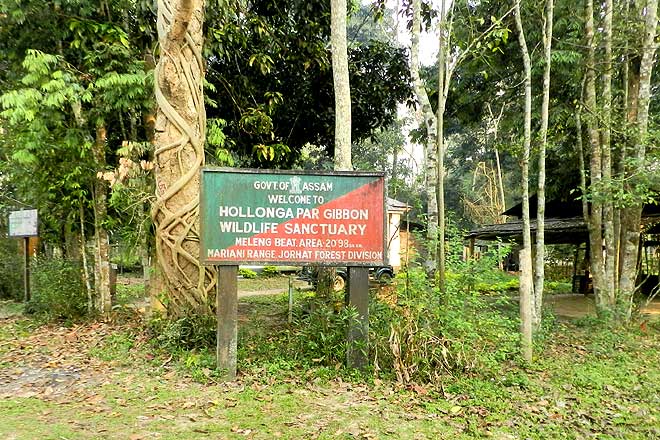“Baith jaiye, baith jaiye,” whispered the forest guard as my companions and I stopped short on our
We sat down and waited quietly. It is not often that you get a chance to see these rare animals up close.

Later, the guard explained that when we stand up, we tower over these animals, making them feel threatened. If we’re sitting down, the difference in height decreases and they feel relatively safe.
Slowly, the macaques regrouped themselves. A few timid individuals took advantage of a long overhead branch and used it as a bridge across the road. The rest—now assured that we weren’t a threat to them—decided to crawl along the road. Some crossed in pairs, others singly. The babies clung to their mothers. One or two macaques chose to sit in the middle of the road for a few minutes of grooming. Some turned their pink faces and looked at us accusingly, as if asking, will you let us be?
The photographers in my team clicked incessantly.
The jolly encounter made the 3 am wake up worth it.
To see the primates, you have to arrive early in the morning, soon after sunrise, we had been told the day before. It would take us a little over three hours to travel by road from Kohora village (adjacent to Assam’s famous Kaziranga National Park), past Jorhat and Mariani, to the Hollongapar Gibbon Wildlife Sanctuary. Around 7am, we pulled up at the Meleng beat office of the sanctuary.
Notified as a reserve forest way back in 1881, and as a wildlife sanctuary in 1997, Hollongapar is quite unique. It’s the only sanctuary in India that’s home to seven primate species: the hoolock gibbon (the flagship species), the capped langur, the stump-tailed macaque, the pig-tailed macaque, the Assamese macaque, the slow loris and the rhesus macaque. All of them are grouped under Schedule I or II of Wildlife Protection Act of India—all of them, except the rhesus macaque, are faced with a globally declining population.

As soon as we arrived, we were greeted by the raucous call of hoolock gibbons. With an armed guard allotted by the office, we rushed towards the forest patch from where the noise was coming. We left the main tar road and followed a trail into the dense forest, clearing our way through the undergrowth. Thankfully, it was the dry month of March and leeches were few.

Up in the dense canopy were about a dozen of gibbons—adults and juveniles, male and female—foraging among the dense canopy. It was fun to watch them swing or ‘brachiate’ from one tree to another with the help of their long limbs. Some of the tiny ones slid down the trunks only to scamper up again. Formally known as the western hoolock gibbon (Hoolock hoolock), the male were black with a conspicuous white brow and the female copper-tan. The juveniles were of a lighter shade. The hoolock gibbon, the only ape found in India, has been classified as ‘endangered’ in the IUCN Red List of Threatened Species.
Unfortunately, more visitors arrived and the hoolocks decided to move further into the forest. Not wanting to disturb them, we returned to the main road. The guard took us down another road and again deep into the undergrowth. Here, a family of stump-tail macaques were having breakfast. After spending some time with them, we went in search of the pig-tailed macaque but could not find them. The sun was getting stronger and, according to the guard, there was little chance of catching the macaques close by. As we were returning, we bumped into the stump-tails on the road.
The Information
Getting There
The Hollongapar Gibbon Wildlife Sanctuary is about 22 km from Jorhat, the nearest airport, and 5 km from Mariani, the nearest railway station. Kaziranga National Park is about 112 km away by road.
Where To Stay
A forest inspection bungalow, with basic facilities, is located within the sanctuary. It is more convenient to stay in Jorhat.
Getting Around
You have to mostly explore on foot, so be prepared. Carry lots of drinking water. There are leeches aplenty during monsoon, and also after the rains. Although the sanctuary is open through the year, the best time to visit is in the months of February and March. Although known for the primates, the forest is also home to leopards, elephants, jungle cats, barking deer, the Malayan giant squirrel and other animals and birds.
For details and permits, contact Jorhat Forest Division, Jorhat 785001, Assam.
Assam
Hollongapar Gibbon Wildlife Sanctuary
India


